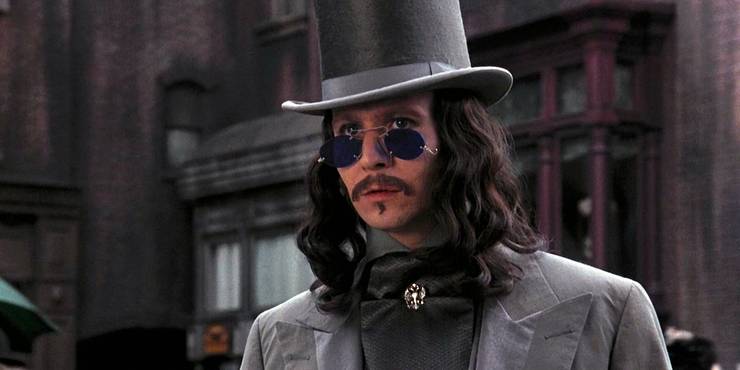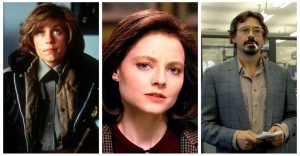Dracula 1992: Every Way Coppola’s Movie Deviates From Bram Stoker’s Novel

Francis Ford Coppola’s 1992 Dracula movie has gained a cult following over the years, despite the ways in which it deviates from Bram Stoker’s 1897 novel of the same name. The general story of the original novel Dracula centers on the vampire’s attempt to move from Transylvania to England so he can find new blood and spread the undead curse. The story also focuses on Dracula’s battle with a small group of people.
Before the 1992 adaptation came out, there were various stage adaptations of the story as well as some other Dracula movies, with various actors taking on the role of the Count. The first was a Hungarian picture called Dracula’s Death, a now-lost film released in 1921. Another was the unofficialadaptation, Nosferatu, which released in 1922. In 1931, the first commercially successful adaptation of Dracula was released under Universal Studios, starring Bela Lugosi as the Count. Universal Studios went on to feature the character of Dracula in many other horror movies. In 1958, a Dracula remake starring Christopher Lee was released. Following the 1992 adaptation, more modern spins on the story were released—including Dracula 2000 and Dracula Untold—but neither saw the success that the Coppola film did. In addition, there are numerous TV shows, including Penny Dreadful and Netflix’s recent Dracula, that involve the famous vampire.
When Coppola’s Dracula came out, it was a game changer. The movie boasted an A-List cast: Gary Oldman as Count Dracula and Vlad the Impaler, Keanu Reeves as Jonathan Harker, Winona Ryder as Mina Harker, Anthony Hopkins as Professor Abraham Van Helsing, and Richard E. Grant as Dr. Jack Seward, among others. The movie was nominated for four Academy Awards and won three of them—Best Costume Design, Best Sound Effects Editing, and Best Makeup. It was also nominated for BAFTA and Hugo awards, and won five Saturn Awards, including Best Horror Film, Best Director, and Best Actor. Due to this reception and for other reasons, Coppola’s Dracula is often considered to be the definitive movie adaptation of Bram Stoker’s horror story. Nevertheless, it made some significant changes to the source material.
How Francis Ford Coppola’s Dracula Changes Bram Stoker’s Novel

Despite the huge popularity of 1992’s Dracula, some critics—especially avid horror readers—have shot down the movie for deviating from its source material. The most notable difference is that in the book, Dracula as an old man bears some resemblance to Vlad the Impaler, but no clear connections are ever drawn between them. In the movie, though, Van Helsing concludes that Dracula is Vlad the Impaler, and that he has become immortal after becoming a vampire.
Another difference concerns the character of Jonathan Harker. In the book, Harker escapes Dracula’s castle after the vampire departs for England. In the 1992 movie, though, he’s kept captive in the castle by Dracula’s vampire brides, who periodically drink his blood before he is finally able to escape. Another deviation concerns the character of Mina—in the book, Dracula forces her to drink his blood, but in the movie, he leaves the decision up to her. Also in the book, Mina does not fall in love with Dracula as she does in the movie. Instead, she is consumed with hatred for him over how he has terrorized her, and she fights hard to stay loyal to her husband.
Another big change comes at the end of the movie. Jonathan Harker and the character Quincy Morris are unable to reach Dracula’s coffin before sunset, so Dracula breaks free for a final struggle. In the book, they have an easier time, chasing down the coffin successfully before stabbing Dracula’s heart and beheading him. Also in the book, Dracula instantly dies and turns to dust, while in the movie, Mina must put Dracula out of his misery in an added romantic plot point.
An additional change is that while Bram Stoker’s Dracula book described the character of Lucy as prim and proper, in the movie she is made out to be voracious. Also, in the book it’s not clear how Dracula became a vampire. In the movie, meanwhile, it’s told that it happened after he won the war and lost his wife. What’s more, Dracula clearly falls in love with Mina in the movie—thinking she’s a reincarnation of his dead wife—but in the book he doesn’t seem to be capable of feeling love, and there is actually no romantic component to the story. The whole basis of the book, actually, is that Dracula is trying to spread his undead curse across England, while the plot of the movie centers on his search for Mina.
What Dracula 1992 Keeps From Stoker’s Novel

Overall, Coppola’s version of Dracula was mostly loyal to the book. For one, Coppola kept Bram Stoker’s use of multiple narrators. The book used journal entries, letters, and newspaper clippings to tell the story of Dracula, and Coppola paid homage to this by shifting protagonists throughout the movie. In fact, most of the narrated diary entries that are used in the movie are taken word-for-word from the original text.
Coppola also stayed faithful to the plot point of the Russian ship, Demeter. This one aspect of the story—which sees an entire crew slowly get murdered (except for the captain)—sets the ominous tone of the novel, and the movie kept it in to set the same ambiance on screen. Additionally, Coppola—and screenwriter James V. Hart—decided to keep in some of the Dracula side characters who are usually left out of screen adaptations of the story. The characters Arthur and Quincey—Lucy’s lovers—are two of those characters who are featured in the film, and their presence ends up helping the movie maintain a romance-fueled theme.
Why Coppola’s Dracula Is Still Popular

Despite the ways in which the 1992 Dracula movie strayed from the novel, it’s arguably the best adaptation of Bram Stoker’s novel in modern cinema. The romantic storylines Coppola added to the movie—especially between Dracula and Mina—draws in viewers and keeps them on the edge of their seats. The movie puts them under the spell of both Jonathan Harker and Dracula, and it’s thrilling to wait and see what will become of Mina.
Additionally, Coppola’s insertion of Dracula’s backstory was a welcome addition to the movie. In the book, Bram Stoker hinted that Dracula’s vampire origins are unknown, while the movie satisfactorily draws an obvious connection between the Count and Vlad the Impaler. Still, some might argue that the mystery shrouding Dracula’s origin story is what makes the original tale all the scarier.
While Coppola’s Dracula will certainly always be beloved as a classic in the horror genre, it’s possible that it might be knocked down a peg in the near future; a new untitled Dracula adaptation from Blumhouse Productions is set to come out, directed by Karyn Kusama. Kusama’s credits include Destroyer, The Invitation, and Jennifer’s Body. Matt Manfredi and Phil Hay are reportedly writing the script. What’s more, Kusama’s adaptation will reportedly be more faithful to the novel, and she’ll stray away from the romantic aspects that previous versions of the story have focused on in the past.
About The Author
















